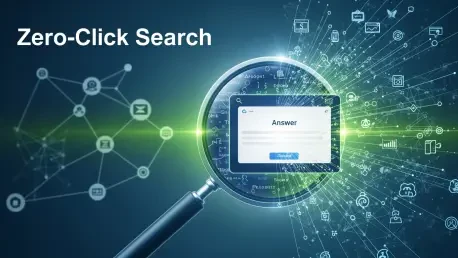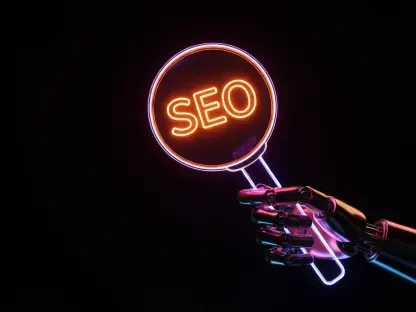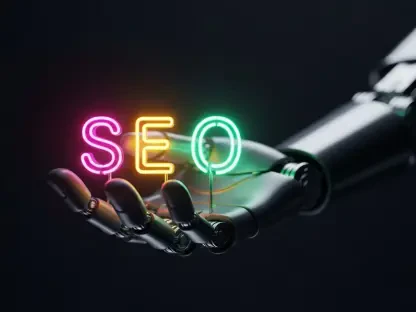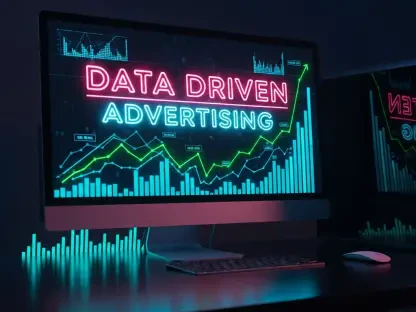In an era where nearly 27.2% of U.S. searches result in no clicks as of this year, the digital landscape is undergoing a profound transformation that challenges traditional marketing approaches. Search engines are no longer mere gateways to websites; they have evolved into answer engines that deliver information directly on the results page. This shift, driven by features like AI Overviews and featured snippets, poses a critical challenge for businesses and marketers: how to maintain relevance when users no longer need to visit a site to get what they want. This report delves into the phenomenon of zero-click search, exploring its implications for search engine optimization (SEO) and offering a roadmap for navigating this new terrain.
Understanding Zero-Click Search and Its Rising Importance
Zero-click search refers to instances where users obtain the information they seek directly on the search engine results page (SERP) without clicking through to an external website. This trend has gained significant traction, with statistics revealing that 27.2% of searches in the U.S. concluded without a click in early 2025, a notable rise from previous figures. In the EU and UK, a similar pattern emerges, with zero-click searches climbing to 26.1% over a comparable period, reflecting a global shift in user behavior.
The prominence of zero-click results is fueled by SERP features such as featured snippets, which provide concise summaries, AI Overviews offering multi-source insights, and knowledge panels displaying verified facts and visuals. These elements cater to the growing demand for instant answers, reducing the need for deeper exploration. Search engines like Google are increasingly prioritizing user convenience, transforming their role from link providers to comprehensive information hubs.
This evolution has far-reaching implications for SEO and digital marketing. As search engines become answer engines, the traditional focus on driving traffic through clicks is being replaced by a need for visibility on the SERP itself. Marketers must adapt to this reality, rethinking strategies to ensure brands remain prominent even when users stay within the search ecosystem.
Drivers and Trends Behind Zero-Click Search Growth
Key Factors Fueling Zero-Click Behavior
Several forces are propelling the growth of zero-click searches, with search engines themselves leading the charge by prioritizing instant answers over traditional click-throughs. Features like AI Overviews and knowledge panels are designed to resolve queries directly on the SERP, while the surge in mobile and voice search amplifies this trend, as users expect quick, conversational responses without navigating to external sites. This shift aligns with a broader user preference for efficiency and immediacy in information retrieval.
Beyond search engine innovations, competition from alternative AI tools like ChatGPT and Perplexity plays a significant role. These platforms offer link-free, conversational answers, further diverting users from conventional search results. Additionally, Google’s ecosystem retention strategies, such as directing clicks to its own properties like YouTube or Maps, contribute to reduced external referrals, with such clicks rising to 12.6% in the EU and UK as of this year.
User behavior is also a critical driver, as expectations have shifted toward on-SERP solutions. The modern searcher often seeks a quick fact or summary rather than an in-depth read, a trend reinforced by the seamless integration of AI-powered features. This cultural change underscores the need for businesses to align with these new interaction patterns to maintain relevance in a zero-click world.
Data and Projections for Zero-Click Search
Current data paints a stark picture of zero-click search prevalence, with the U.S. seeing 27.2% of queries ending without a click in early 2025, while the EU and UK report a rise to 26.1% over the same timeframe. This trend has tangible impacts, particularly for industries reliant on organic traffic, such as news publishers, whose visits dropped from 2.3 billion to 1.7 billion by mid-2025, a decline attributed to zero-click results for news queries jumping to 69%.
Looking ahead, forecasts suggest zero-click behavior will continue to escalate through 2026 and beyond, driven by advancements in AI and evolving user preferences. Click-through rates (CTRs) for many queries are projected to fall below 1%, especially as AI-generated summaries become more comprehensive. This trajectory indicates a future where traditional traffic metrics may lose relevance, pushing marketers to focus on alternative success indicators.
The long-term outlook points to an even greater reliance on zero-click features, with search engines refining their ability to predict and answer complex queries directly. As a result, sectors dependent on organic referrals must brace for sustained traffic declines, necessitating innovative approaches to capture user attention within the confined space of the SERP.
Challenges Posed by Zero-Click Search for SEO Professionals
The rise of zero-click search presents formidable obstacles for SEO professionals, chief among them being the sharp decline in organic traffic. With AI Overviews and featured snippets answering queries directly, users have little incentive to click through, leading to CTRs plummeting below 1% for many high-ranking pages. This erosion of traditional traffic streams demands a fundamental shift in how success is measured and achieved.
Another challenge lies in the pivot from traffic to visibility as the primary metric. The emphasis now falls on Answer Engine Optimization (AEO) and Generative Engine Optimization (GEO), requiring content to be tailored for direct SERP display rather than click-driven engagement. This transition places pressure on marketers to secure spots in coveted features like snippets or panels, where competition is fierce, including against Google’s own properties.
Navigating this crowded SERP landscape requires strategic adaptation. Initial steps include enhancing brand visibility through structured content and schema markup to increase the likelihood of appearing in zero-click features. Additionally, diversifying focus to include non-traffic metrics, such as impressions, offers a way to gauge impact even when clicks are scarce, setting the stage for more resilient SEO practices.
Adapting to Regulatory and Ethical Considerations in Zero-Click Search
The zero-click search phenomenon is not without regulatory scrutiny, as debates intensify over fairness in how these results impact website traffic and revenue. Critics argue that search engines disproportionately benefit by retaining users on their platforms, prompting calls for policies that ensure equitable distribution of visibility and clicks. This ongoing discourse could shape future guidelines for SERP feature implementation.
Compliance with data privacy laws, such as GDPR in the EU, adds another layer of complexity when optimizing for zero-click features that rely on structured data. Marketers must ensure that personal information used in snippets or panels adheres to strict regulations, balancing user experience with legal obligations. Failure to do so risks penalties and reputational damage in an increasingly privacy-conscious market.
Ethical considerations also come into play, particularly regarding content accuracy in AI summaries and featured snippets. Misleading or incomplete information displayed directly on the SERP can harm user trust and brand credibility. As regulations evolve, there is a growing need to prioritize factual integrity and transparency, ensuring that zero-click results serve users without compromising the interests of content creators.
Future Outlook: Zero-Click Search and SEO Strategies for 2026 and Beyond
As technology advances, emerging tools like sophisticated AI models and fan-out query architecture are expected to further enhance zero-click results by processing complex queries with unprecedented precision. These innovations will likely deepen the trend of on-SERP answers, making it imperative for SEO strategies to evolve in tandem with such capabilities through 2026 and into the future.
Potential disruptors, including alternative search platforms like TikTok and Amazon, could redefine user reliance on traditional SERPs. These platforms cater to niche search behaviors, offering visual or product-focused results that challenge Google’s dominance. This diversification of search avenues suggests that marketers must look beyond conventional engines to capture fragmented audiences.
Consumer preferences are also shifting toward conversational and instant answers, particularly through voice and mobile search, which favor zero-click formats. To stay ahead, SEO efforts should target long-tail queries, optimize for local packs, and explore non-SERP traffic sources like social media and email. Global economic and technological factors, such as increased mobile penetration in emerging markets, will further influence search behavior, driving the need for adaptive, innovative strategies.
Conclusion and Actionable Recommendations for SEO Success
Reflecting on the insights gathered, it becomes clear that zero-click search has redefined the SEO landscape by shifting the focus from clicks to visibility. This transformation challenges conventional metrics and compels a reevaluation of what constitutes digital success. The dominance of SERP features underscores a critical need for brands to adapt swiftly to maintain relevance.
Moving forward, actionable steps emerge as vital for navigating this shift. Targeting featured snippets through concise, structured content and leveraging schema markup proves effective in securing prominent SERP placements. Prioritizing impressions over CTRs, and using tools like Google Search Console and Semrush to track appearances in SERP features, offers a practical way to measure impact.
Looking ahead, businesses are encouraged to view zero-click search as an opportunity for heightened brand awareness rather than a barrier. Diversifying traffic sources beyond search engines, such as through social platforms and direct channels, provides a buffer against declining clicks. Embracing these strategies positions companies to thrive in an evolving digital environment, turning visibility into a powerful asset for long-term growth.









